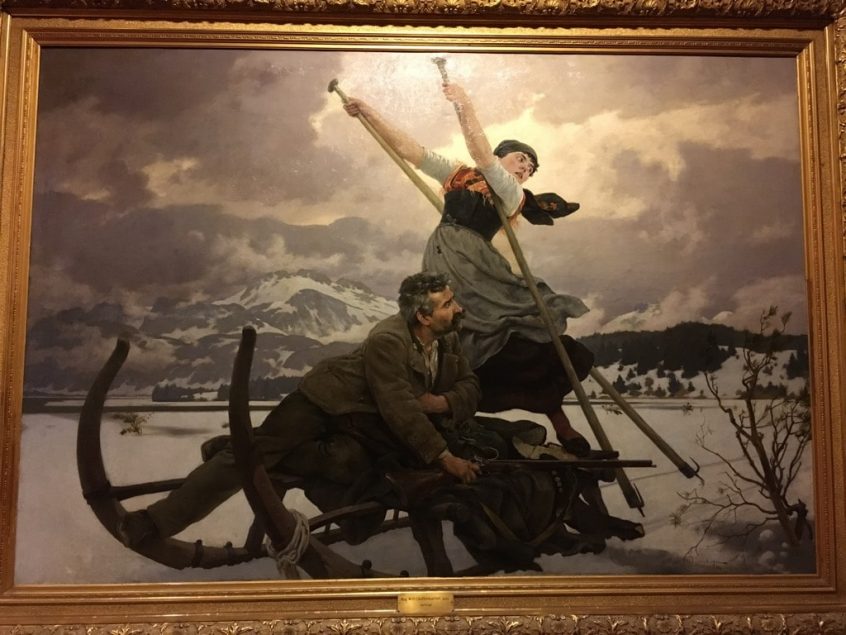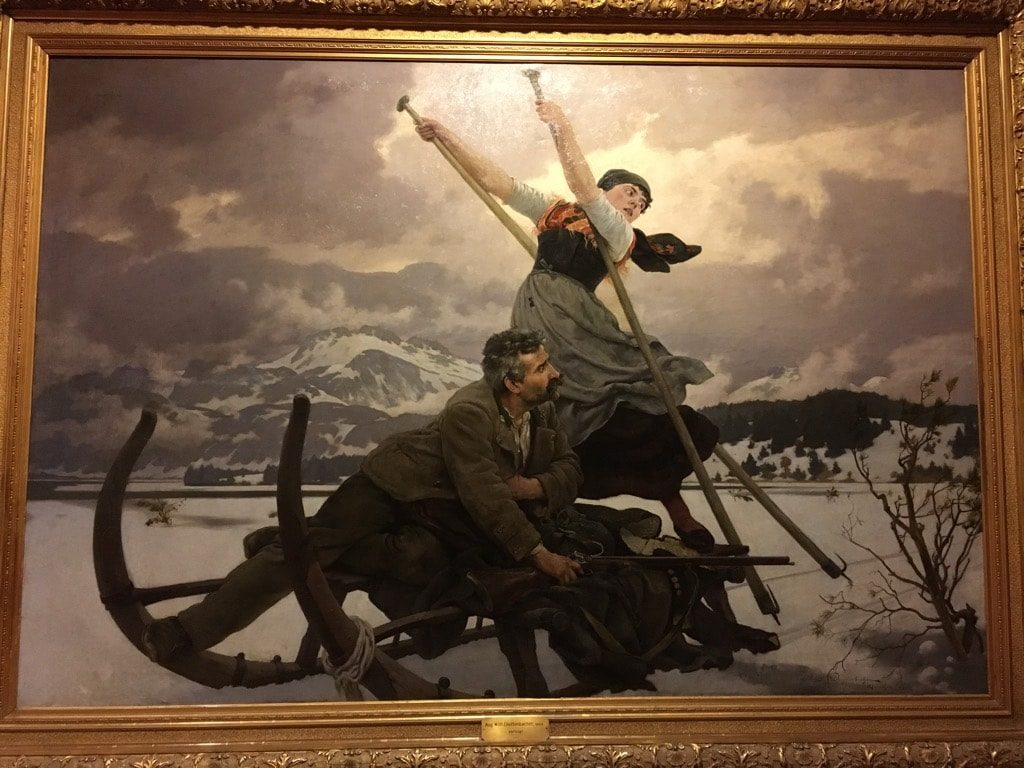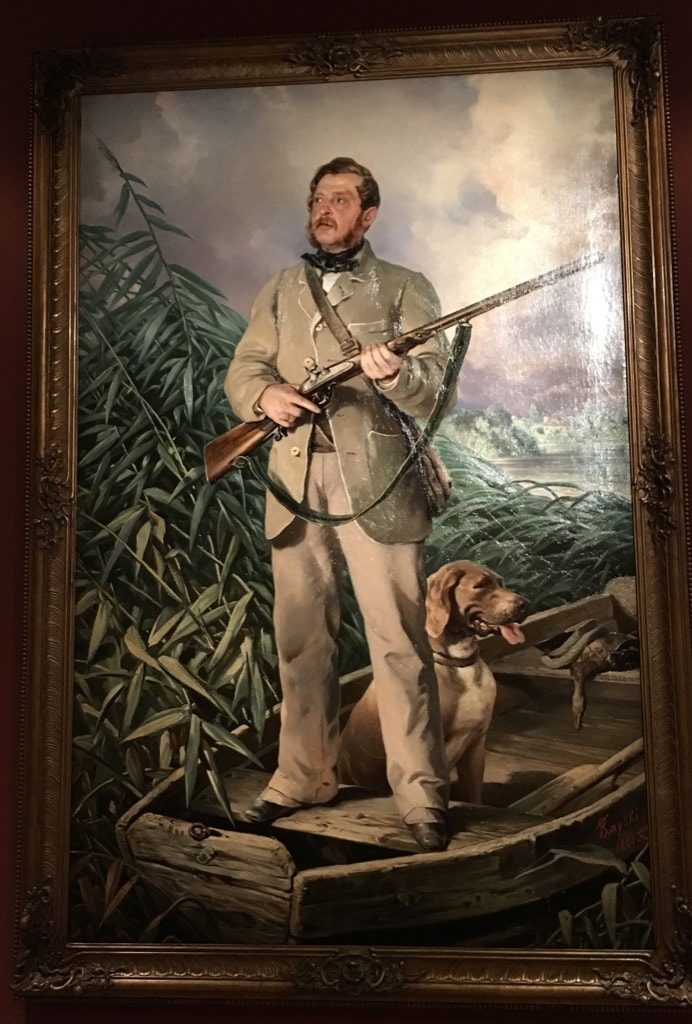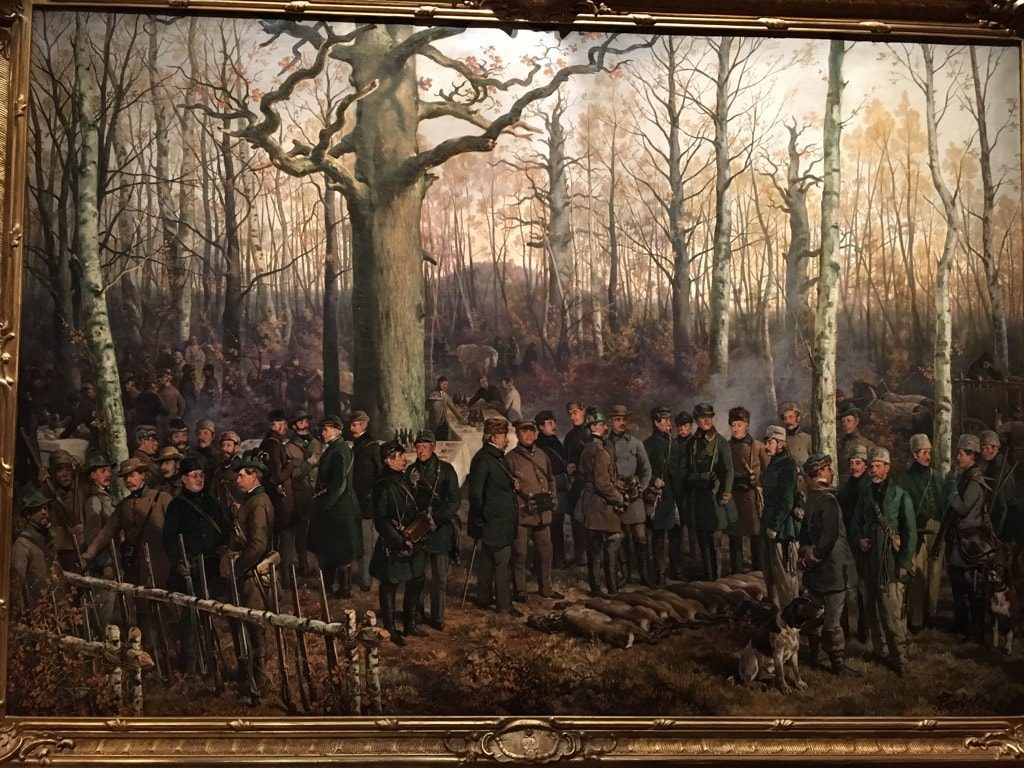Is it because all these wonderful paintings take place in Germany, that hunting and shooting suddenly seems perfectly acceptable to the French ? In any case, the exhibition « Scènes de chasse en Allemagne » is a small, original and surprisingly interesting show set in one of the most beautiful houses of Paris, Musée de la chasse et de la nature.
Funded by Fondation Sommer, this museum devotes its spaces primarily to animals, nature and men’s relations to animals. While Claude d’Anthenaise, its director, often escapes into contemporary art directions, he always finds new ways of describing hunting. And this show is a good illustration of his talent.
With Gilbert Titeux, an expert of Gustave Courbet’s hunting scenes, he found many German and Swiss museums to lend him striking works. My preference goes to Ferdinand von Rayski (1806-1890) who is considered the master of the Dresden school and an excellent portraitist. An official painter of royal hunts, he paints Saxon aristocrats with their teams of hunters and beaters.
But nature is also a major focus of the exhibition as represented in the beautiful “Capture of a baby eagle” by Konrad Reinherz. The majesty of the mountains and the fragility of man among them is quite striking. Some paintings are a little kitsch but all have an uncommon freshness.
I like the romanticism of 19 th century Germany shown in the portrait of Friedrich von Boxberg, waiting for the game on a boat with his dog. Elegance, sportivity and the culture of outdoors are all present and remind us that hunting is not, only, a rich man’s sport. It is based on a good knowledge of animal life and respect of nature.
The contemporary German artist Georg Baselitz, very influenced by von Rayski, was invited to exhibit his « inversed paintings » on shooting. I was less convinced by this part of the show even though I admire Baselitz’s work in general.
The large paintings of the rutting of the deer or that of a 16 woods stag shot by William II in 1890, are more bizarre and intriguing, especially in this fabulous 18 th century house where stuffed animals surprise you in every room. And discovering multiple aspects of deer hunting without having to freeze to death in deep forests covered in snow has an advantage ! On January 28, from 10 am to 7 pm, a Book fair on Nature will take place in the museum.
(Until February 12, Musée de la chasse et de la nature)
Share this Post




